OER: Coming Soon to a Course Near You?
by Brian Newberry, PhD
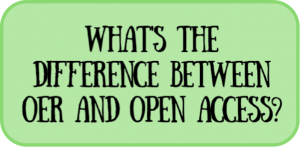
What Is an OER?
Open Education Resources (OER) are being adopted, and created, at an increasing rate. Some colleges are creating entire degree or certificate programs based on the use of OER. Yet, there is still confusion about what makes something an OER as opposed to Open Access. The difference can be confusing because it deals with copyright. Open Access material generally employs a copyright that is restrictive, meaning that users of that material have fewer legal options for how the material is handled.
However, OER material, such as the Excelsior University Online Writing Lab (OWL), uses a copyright that permits greater latitude in how the material is treated.
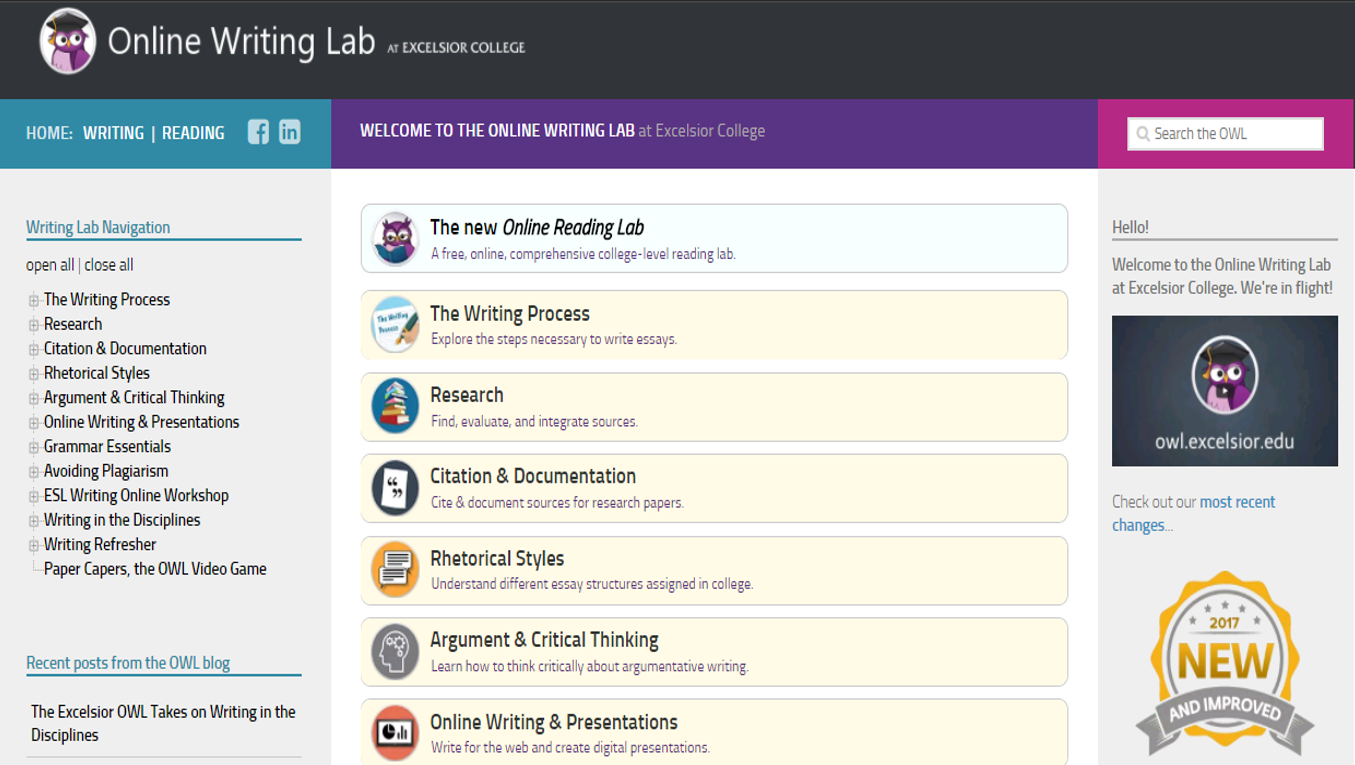
The differences between open access and OER have come to be defined and described by the five “R’s”
- Retain
- Reuse
- Revise
- Remix
- Redistribute
It may be useful at this time to expand these by defining each and how these permit greater use possibilities for end users.
 |
Retain refers to the right to keep a copy of the OER. Unlike most Open Access materials, you are permitted to keep a local copy of an OER. This is especially useful if you like to create a class where all the materials needed for that class are housed in one place, for example in a website, flash drive, or course pack. |
 |
Reuse means that you can use the material repeatedly and for many different purposes. In practical terms this means that not only can you link to an OER text book for use in your class, you can also create a podcast with you reading the text, or print the text. |
 |
Revise is the ability to change the material to suit your purposes. Open access materials, such as a YouTube video, allow you to view the content, but not alter it in any way. However, with an OER you can edit or condense it, add materials to it in order to enhance it, or even translate it to another language. |
 |
Remix refers to the right to combine the OER with other materials to create a new resource. Open access materials do not generally permit you to create such derivative works. |
 |
Redistribute refers to the ability to share the OER or your revised or remixed version of the OER with anyone by any means. This is important if you are creating a course that needs to be packaged up and delivered to the end user by CD, DVD, etc. Open access materials do not allow users to change how others access the material. |
Be aware that the copyright employed by an OER can restrict certain things. For example, an OER might require you to credit the original creator of a work, agree to release any revisions or remixes you create with the same copyright, or forbid commercial use. For more information on copyright and OER check out the Creative Commons, the creator of the copyright system that most OER materials use.
How Is OER Impacting Learning?
With all this in mind it is time to consider how OER is impacting learning. While there are many possible ways to examine these changes, for the sake of brevity in this article these will be grouped into three categories: cost, access and organization.
Changes in Cost
While it may not ultimately be the most significant factor, the fact that OER is available for use at no cost is a factor that is attracting a lot of attention. This is not too surprising when considering the cost of college texts. By some estimates, the cost of textbooks has gone up at a rate more than four times the base inflation rate (Senack, 2016). Considering that it is not unusual to pay $200.00 or more for some texts, it is clear that a lower-cost alternative could be attractive and a force for change.
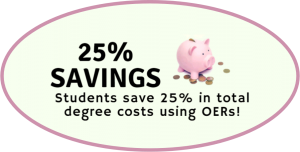 One of the early proponents of the OER-based degree is Tidewater Community College. Their “Z-Degree” makes use of OER in place of commercial materials. By Tidewater’s estimate, students save 25% in the total cost of the degree compared to a degree that requires commercial texts. Interestingly, early reports (Wiley, Williams, DeMarte & Hilton, 2016) indicate that the “Z-Degree” enjoyed a slightly lower student attrition rate, and speculation is that in part this was due to student success because of earlier instructional material access and cost.
One of the early proponents of the OER-based degree is Tidewater Community College. Their “Z-Degree” makes use of OER in place of commercial materials. By Tidewater’s estimate, students save 25% in the total cost of the degree compared to a degree that requires commercial texts. Interestingly, early reports (Wiley, Williams, DeMarte & Hilton, 2016) indicate that the “Z-Degree” enjoyed a slightly lower student attrition rate, and speculation is that in part this was due to student success because of earlier instructional material access and cost.
Interestingly, OER is attracting the attention of mainstream textbook publishers. At least two have announced initiatives that will use OER content with “value added” features supplied by the publisher as a way to reduce costs for students while still providing a high quality learning experience. It is possible that the increased use of OER may produce downward pressure on textbook prices, but that remains to be seen.
Changes in Access
Although most commercial texts are now available in a digital format, printed material is still the usual way that texts are accessed. OER resources, on the other hand, are typically accessed in digital form via a web link. However, there are many options, and the freedom that OER offers is useful to consider. Because OER permits the retention of a copy, OER for a course could be loaded onto a flash drive for distribution to students. One can also make a copy of many OER materials and post them to a website or Course Management System (CMS). Students can save many OER materials to their phone, tablet, or computer. These options potentially change the way we think about how students access course materials. Rather than teachers admonishing students to put their phones away to prevent distractions, we may find ourselves asking students to get their phones out in order to access OER materials such as the OWL as they are working on a project in class.
Changes in Organization of Course Materials
Along with the many options available for accessing OER materials comes changes in the way these materials are organized and used. Because the vast majority of OER materials are accessed via the Internet and with the specific permission and ability to create a local copy, it is becoming common for courses to create a link to the OER material in the CMS shell for the class, and, increasingly, instructors are also posting a copy of the OER in the CMS, as well.
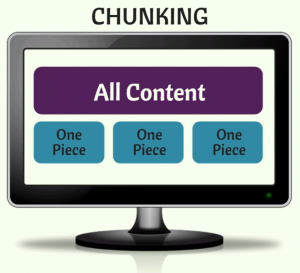 Going beyond this, because OER materials are usually digital and permit revision, remixing, and multiple use methods, many course developers are beginning to think of ways to associate the OER material with other components of the class at the point of use. In some cases, this is done by excerpting sections from OER texts to create a shorter-than-text length reading that is appropriate for the objectives of the lesson. This practice of “chunking” course content works well when developing a course in a modular format and might reduce the cognitive load on the student, helping them focus more closely on the resources needed to attain the learning objectives in a particular section of a course. Another way to think of this is to use OER materials to provide the primary content interaction in a class session and to provide other OER materials for remediation and enrichment experiences in the same lesson. These remediation and enrichment materials are then to be used as needed or desired by the students in that lesson. For example, instructors might assign and make available by a link specific sections of a resource such as the OWL to provide a lesson on how to create a bibliography or begin to do in-text citations. Then, in the same lesson-space, the instructor might create links to other sections of the OWL to be used by students only if needed or desired, such as to help them with grammar, to avoid plagiarism, or to write more clearly and effectively.
Going beyond this, because OER materials are usually digital and permit revision, remixing, and multiple use methods, many course developers are beginning to think of ways to associate the OER material with other components of the class at the point of use. In some cases, this is done by excerpting sections from OER texts to create a shorter-than-text length reading that is appropriate for the objectives of the lesson. This practice of “chunking” course content works well when developing a course in a modular format and might reduce the cognitive load on the student, helping them focus more closely on the resources needed to attain the learning objectives in a particular section of a course. Another way to think of this is to use OER materials to provide the primary content interaction in a class session and to provide other OER materials for remediation and enrichment experiences in the same lesson. These remediation and enrichment materials are then to be used as needed or desired by the students in that lesson. For example, instructors might assign and make available by a link specific sections of a resource such as the OWL to provide a lesson on how to create a bibliography or begin to do in-text citations. Then, in the same lesson-space, the instructor might create links to other sections of the OWL to be used by students only if needed or desired, such as to help them with grammar, to avoid plagiarism, or to write more clearly and effectively.
Final Thoughts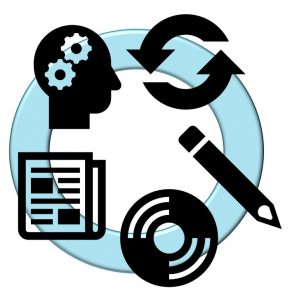
While cost, or lack of cost, is what might seem like the primary reason for using OER, it is really the greater flexibility of use that OER provides that is its true advantage. Because OER can be Retained, Reused, Revised, Remixed and Redistributed (the 5 “R’s”), OER gives educators more options for how they have students access and use learning resources. Ultimately, OER use can be beneficial to students in ways other than just cost.
Something to keep in mind is that it is not unusual to make use of OER, open access, and commercial material in the same class. It is just important to remember and make use of the greater flexibility that OER offers when doing so. In this way, you can use the right resource for the right reasons.
Another way that OER is potentially changing learning is that developing OER can be a way for an educator to make their knowledge and expertise available to a wider audience. Because OER permits revising and remixing, it reduces the barrier to material development. An educator doesn’t have to start with a blank page if they want to create a custom text book or a specific learning object. Additionally, as OER awareness and use grows, more options for distributing OER are becoming available. All this combines to make cost and effort for creating learning materials and distributing them less difficult than ever before.
Brian Newberry, PhD is a retired professor of Instructional Technology and Design at California State University, San Bernardino. He is currently the Instructional Designer for Jackson College in Jackson Michigan and serves on the OWL Advisory Board.
Senack, E. (2016). Covering the cost. Student PIRGS. Available: https://studentpirgs.org/sites/student/files/reports/National%20-%20COVERING%20THE%20COST.pdf
Wiley, D., Williams, L., DeMarte, D., & Hilton, J. (2016). The Tidewater Z-Degree and the INTRO Model for Sustaining OER Adoption. Education policy analysis archives, 24, 41. doi:http://dx.doi.org/10.14507/epaa.24.1828
Tidewater Community College “Z-Degree” Program: Impact of OER on the Total Cost-Of-Degree. Tidewater Community College. Available: https://web.tcc.edu/academics/zdegree/images/lightbox/photos/savings.jpg
